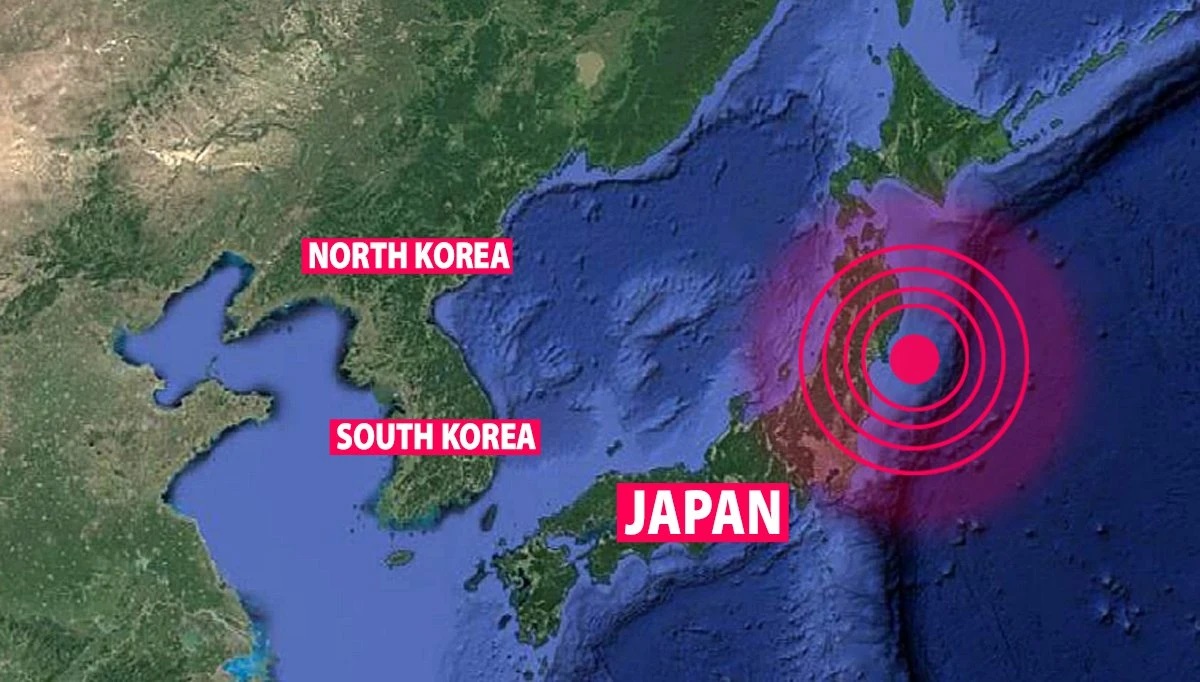A powerful 7.4 magnitude earthquake struck off the coast of Fukushima in northern Japan on Wednesday evening, leaving four dead, and plunging more than 2m homes in the Tokyo area into darkness.
The region is part of northern Japan that was devastated by a deadly 9.0 quake and tsunami 11 years ago that also triggered nuclear plant meltdowns, spewing massive radiation that still makes some parts uninhabitable.
Loading...
⭕ ⚠️🌊 A Powerful 7.3 magnitude #earthquake hits north #Japan, #tsunami alert issued#Fukushima
Wed Mar 16 2022
🔱 𝖠 𝖡 𝖸 𝖲 𝖲 ℭ𝔥𝔯𝔬𝔫𝔦𝔠𝔩𝔢𝔰 | 𝙳𝚘𝚘𝚖 𝙽𝚎𝚠𝚜 pic.twitter.com/j8P6HS0roC
— ♆ABYSS ℭ 𝔥 𝔯 𝔬 𝔫 𝔦 𝔠 𝔩 𝔢 𝔰 (@AbyssChronicles) March 16, 2022
The Japan Meteorological Agency later lifted its low risk tsunami advisory issued along the coasts of Fukushima and Miyagi early Thursday. Tsunami waves of 30cm (11in) reached shore in Ishinomaki, which lies about 390km (242 miles) north-east of Tokyo. The agency upgraded the magnitude of the quake to 7.4 from the initial 7.3.
On 14 March 2022, #earthquake in NZ of 5.3 magnitude, Indonesia (6.7), Philippines (6.7).
On 16 Mar, earthquake in #Japan #Fukushima of 7.3 magnitude.
On 17 Mar, earthquake in Southern Iran of 5.8 magnitude.
End is near or not, we don’t know yet. pic.twitter.com/GVZGpQdUvt
— 🍀🍃☘️™® …… (@zak065) March 17, 2022
Japan’s prime minister, Fumio Kishida, said four people had died and that the government would be on high alert for the possibility of further strong tremors over the next two to three days.
At least 107 people were reported injured, several of them seriously, with 4,300 households still without water by mid-morning. Residents of one Fukushima city formed a long queue in a parking lot to fill up plastic tanks with water for use at home.
NHK footage showed broken walls of a department store building fell to the ground and shards of windows scattered on the street near the main train station in Fukushima city, about 60km (36 miles) from the coastline. Roads were cracked and water poured out from pipes underground. Footage also showed furniture and appliances smashed to the floor at apartments in Fukushima.
The Tokyo Electric Power Company Holdings, which operates the Fukushima Daiichi nuclear plant where the cooling systems failed after the 2011 disaster, said workers found no abnormalities at the site, which was in the process of being decommissioned.
Japan’s Nuclear Regulation Authority said a fire alarm went off at the turbine building of No 5 reactors at the Fukushima Daiichi but there was no actual fire. Water pumps for the spent fuel cooling pool at two of the four reactors at Fukushima Daini briefly stopped, but later resumed operation. Fukushima Daini, which survived the 2011 tsunami, is also set for decommissioning.
Manufacturers, including global chipmaker Renesas Electronics and automaker Toyota, said they were trying to gauge the potential damage to their facilities in the region.
The Japan Meteorological Agency said the quake hit at 11.36pm at a depth of 60km (36 miles) below the sea.
Japan’s Air Self-Defence Force said it sent fighter jets from the Hyakuri base in Ibaraki prefecture, just south of Fukushima, for information gathering and damage assessment.
More than 2.2m homes were temporarily without electricity in 14 prefectures, including the Tokyo region, but power was restored at most places by the morning, except for some homes in the hardest hit Fukushima and Miyagi prefectures, according to the Tohoku Electric Power Co which services the region.
The quake shook large parts of eastern Japan, including Tokyo, where buildings swayed violently.
East Japan Railway Co said most of its train services were suspended for safety checks. Some local trains later resumed service.
Many people formed long lines outside of major stations while waiting for trains to resume operation late Wednesday, but trains in Tokyo operated normally Thursday morning.
A Tohoku Shinkansen express train partially derailed between Fukushima and Miyagi due to the quake, but nobody was injured, Kishida said.
He told reporters that the government was assessing the extent of damage and promised to do its utmost for rescue and relief operations.
Chief cabinet secretary Hirokazu Matsuno said authorities were scrambling to assess damage. “We are doing our utmost in rescue operations and putting people’s lives first,” he said.






